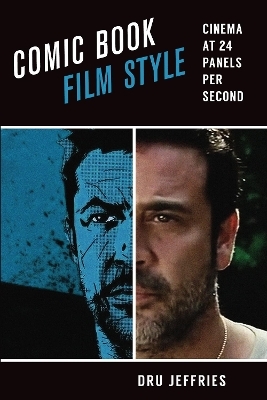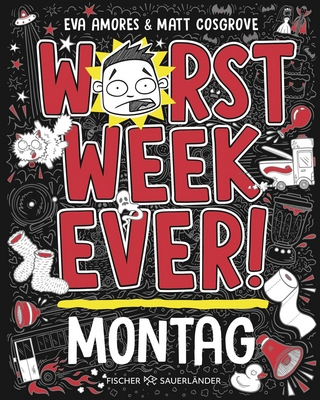
Comic Book Film Style
Cinema at 24 Panels per Second
Seiten
2017
University of Texas Press (Verlag)
978-1-4773-1450-0 (ISBN)
University of Texas Press (Verlag)
978-1-4773-1450-0 (ISBN)
Emphasizing films such as Batman: The Movie that have received little scholarly attention, this book presents a new and more coherent definition of the comic book film as a stylistic approach rather than a genre.
Superhero films and comic book adaptations dominate contemporary Hollywood filmmaking, and it is not just the storylines of these blockbuster spectacles that have been influenced by comics. The comic book medium itself has profoundly influenced how movies look and sound today, as well as how viewers approach them as texts. Comic Book Film Style explores how the unique conventions and formal structure of comic books have had a profound impact on film aesthetics, so that the different representational abilities of comics and film are put on simultaneous display in a cinematic work.
With close readings of films including Batman: The Movie, American Splendor, Superman, Hulk, Spider-Man 2, V for Vendetta, 300, Scott Pilgrim vs. the World, Watchmen, The Losers, and Creepshow, Dru Jeffries offers a new and more cogent definition of the comic book film as a stylistic approach rather than a genre, repositioning the study of comic book films from adaptation and genre studies to formal/stylistic analysis. He discusses how comic book films appropriate comics’ drawn imagery, vandalize the fourth wall with the use of graphic text, dissect the film frame into discrete panels, and treat time as a flexible construct rather than a fixed flow, among other things. This cinematic remediation of comic books’ formal structure and unique visual conventions, Jeffries asserts, fundamentally challenges the classical continuity paradigm and its contemporary variants, placing the comic book film at the forefront of stylistic experimentation in post-classical Hollywood.
Superhero films and comic book adaptations dominate contemporary Hollywood filmmaking, and it is not just the storylines of these blockbuster spectacles that have been influenced by comics. The comic book medium itself has profoundly influenced how movies look and sound today, as well as how viewers approach them as texts. Comic Book Film Style explores how the unique conventions and formal structure of comic books have had a profound impact on film aesthetics, so that the different representational abilities of comics and film are put on simultaneous display in a cinematic work.
With close readings of films including Batman: The Movie, American Splendor, Superman, Hulk, Spider-Man 2, V for Vendetta, 300, Scott Pilgrim vs. the World, Watchmen, The Losers, and Creepshow, Dru Jeffries offers a new and more cogent definition of the comic book film as a stylistic approach rather than a genre, repositioning the study of comic book films from adaptation and genre studies to formal/stylistic analysis. He discusses how comic book films appropriate comics’ drawn imagery, vandalize the fourth wall with the use of graphic text, dissect the film frame into discrete panels, and treat time as a flexible construct rather than a fixed flow, among other things. This cinematic remediation of comic books’ formal structure and unique visual conventions, Jeffries asserts, fundamentally challenges the classical continuity paradigm and its contemporary variants, placing the comic book film at the forefront of stylistic experimentation in post-classical Hollywood.
Dru Jeffries teaches comics studies at Wilfrid Laurier University and has taught film at Concordia University and the University of Toronto. He has published scholarship on film and comic books in Porn Studies, Quarterly Review of Film and Video, Cinephile, and several edited volumes.
Acknowledgments
Introduction
Chapter 1. The Six Modes of Interaction between Comics and Film
Chapter 2. Vandalizing the Fourth Wall: Word-Image Hybridity and a Comic Book Cinema of Attractions
Chapter 3. These Panels Have Been Formatted to Fit Your Screen: Remediating the Comics Page through the Cinematic Frame
Chapter 4. The Privileged Instant: Remediating Stasis as Movement
Chapter 5. The Polymedial Comic Book Film
Conclusion
Notes
Bibliography
Index
| Erscheinungsdatum | 28.09.2017 |
|---|---|
| Verlagsort | Austin, TX |
| Sprache | englisch |
| Maße | 152 x 229 mm |
| Gewicht | 399 g |
| Themenwelt | Literatur ► Comic / Humor / Manga |
| Kunst / Musik / Theater ► Film / TV | |
| ISBN-10 | 1-4773-1450-4 / 1477314504 |
| ISBN-13 | 978-1-4773-1450-0 / 9781477314500 |
| Zustand | Neuware |
| Haben Sie eine Frage zum Produkt? |
Mehr entdecken
aus dem Bereich
aus dem Bereich
Eine Weihnachtsgeschichte
Buch | Softcover (2023)
Reclam, Philipp (Verlag)
5,00 €
Buch | Softcover (2024)
Reclam, Philipp (Verlag)
8,00 €


